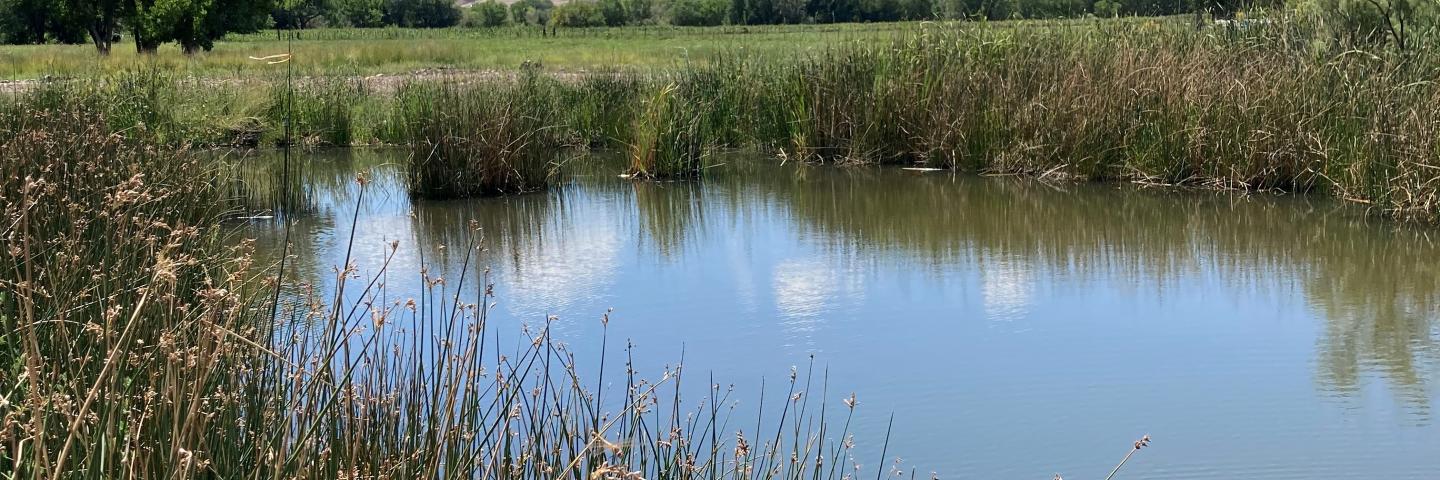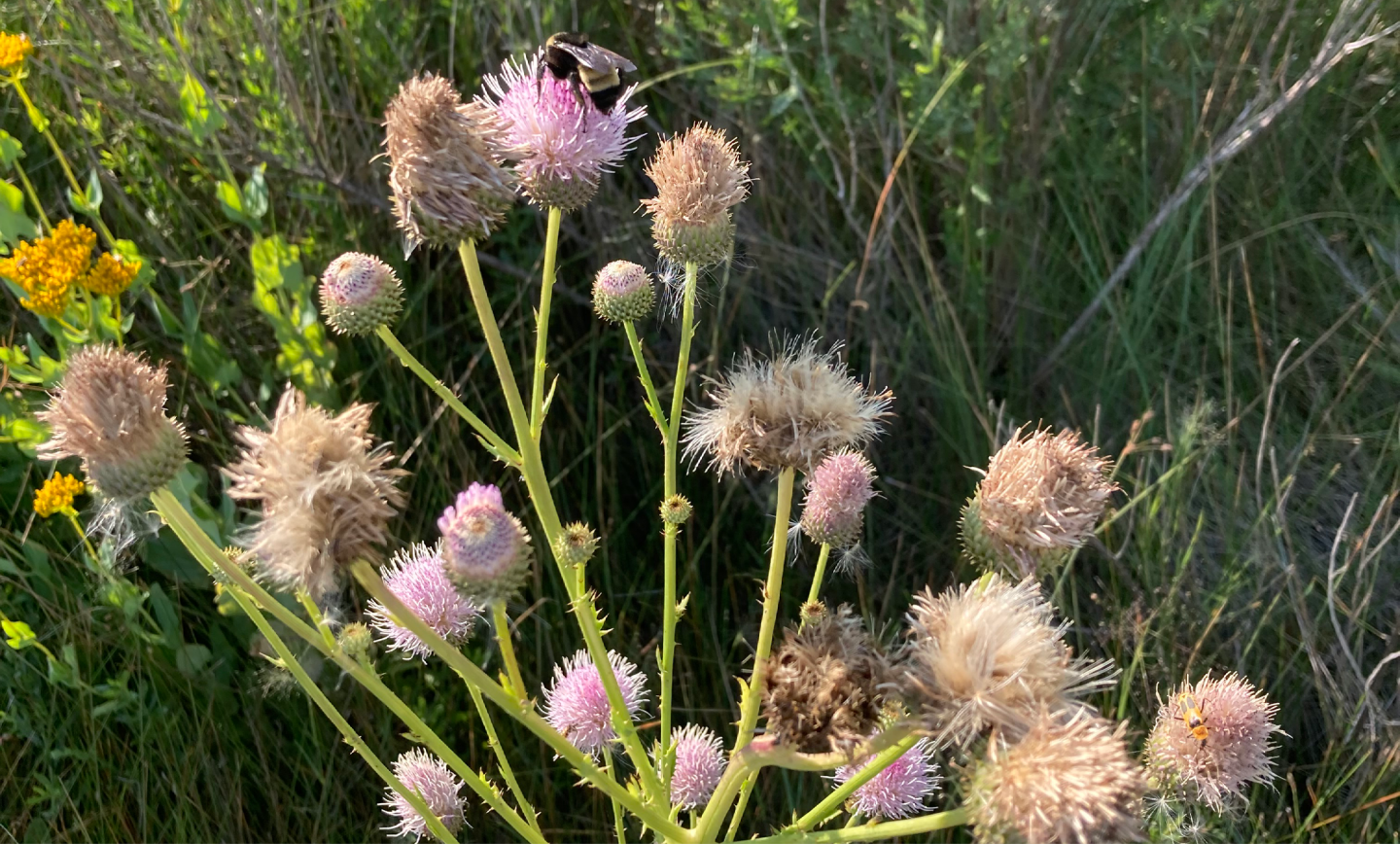Notice


Wetlands Reserve Easements (WRE) help private and tribal landowners protect, restore and enhance wetlands which have been previously degraded due to agricultural uses. Landowners may apply at any time through Farmers.gov or the local NRCS office.
The application deadline for fiscal year 2026 ACEP applications is October 17, 2025.
Under the Wetland Reserve Easement (WRE) component of ACEP, NRCS helps to restore, protect and enhance enrolled wetlands directly with private landowners and Indian tribes through the purchase of a conservation easement or contract. Participants voluntarily protect their land for wildlife but retain private ownership. On acreage subject to a Wetlands Reserve Easement, participants control access to the land and may lease the land for hunting, fishing, and other undeveloped recreational activities. Through the easement deed the landowners grant the United States the right to restore, protect, manage, maintain, enhance, and monitor the wetland and other natural values of the easement area. Applicants may enroll their entire land area or a portion of their land. Applications are received year-round with application deadlines established to meet fiscal year contracting deadlines. The eligibility requirements below also apply to US-held easements under the Regional Conservation Partnership Program (RCPP).
Restoring America's Wetlands: ACEP & WRE (usda.gov)
ACEP-WRE for Landowners - FIC (farmlandinfo.org)
What are the benefits?
Land enrolled in WRE provides habitat for fish and wildlife, including threatened and endangered species, improves water quality by filtering sediments and chemicals, reduces flooding, recharges groundwater, protects biological diversity, increases carbon sequestration and provides opportunities for educational, scientific and limited recreational activities.
Who is eligible?
Landowners of private land and American Indian tribes are eligible for WRE.
Landowners must convey clear title to the land and must have owned the land for at least 24 months. A waiver to the 24-month requirement can be approved by NRCS for limited circumstances. A 24-month ownership waiver request worksheet must be completed by the landowner and submitted with the application.
All landowners of land being offered for WRE, including required members of landowner-legal entities, must meet the Adjusted Gross Income, Highly Erodible Land and Wetland Conservation Compliance requirements and file the appropriate forms with the Farm Service Agency. Landowners who are entities must provide proof that the entity is legal and valid in the state where the land is located.
What land is eligible?
To be eligible the land must contain an eligible wetland type:
(i) Farmed or Converted Wetlands.—Wetlands farmed under natural conditions, farmed wetlands, prior converted cropland, commenced conversion wetlands, or farmed wetland pasture.
(ii) Former or Degraded Wetlands.—Former or degraded wetlands that occur on lands that have been or are being used for the production of food and fiber, including rangeland, pastureland, hayland, and forest production lands, where the hydrology has been significantly degraded or modified and will be substantially restored through the implementation of the wetland reserve plan of operations (WRPO).
(iii) Lands Substantially Altered by Flooding.—Agricultural lands substantially altered by flooding so as to develop and retain wetland functions and values. Examples include—
• Land that has been scoured by floods or broken levees resulting in the development of wetland characteristics and providing wetland functions and values.
• Lands that have soil saturation and water table elevation changes as a result of offsite surface or subsurface hydrologic changes (e.g., dams and irrigation systems) resulting in the development of wetland characteristics and providing wetland functions and values.
(iv) Croplands or Grasslands Flooded by Overflow of a Closed Basin Lake or Pothole- Certain croplands or grasslands that were used for agricultural production that are subject to flooding from the natural overflow of a closed basin lake or pothole.
(v) Wetlands Restored or Protected Under a Private, State, or Federal Program - Eligible wetland types previously restored privately or under a local, State, or Federal restoration program, on which the restored wetland areas meet or are capable of meeting NRCS restoration standards and specifications are eligible. These may include but are not limited to wetlands restored under the restoration cost-share agreement enrollment option of the former Wetlands Reserve Program (WRP), the former NRCS Wildlife Habitat Incentives Program (WHIP), or another similar restoration program, such as the FWS Partners for Fish and Wildlife Program, and may during the agreement period or after, be enrolled in ACEP-WRE.
Riparian areas along streams or other waterways are eligible, provided that the offered riparian area directly links wetlands less than 1 mile apart and that those wetlands are currently protected or will be protected under the same ACEP-WRE easement transaction. Non-wetlands may be enrolled if necessary to protect the adjacent wetland functions.
- NRCS will conduct onsite reviews to determine the eligibility of the wetland and non-wetland acres.
- Land that does not meet the requirements of the Food Security Act highly erodible land and wetland conservation compliance are not eligible.
- Land is not eligible if the enrollment would exceed the county cap of 25% of county cropland acres enrolled in WRE and the Conservation Reserve Program.
- There must be unencumbered, unrestricted, transferable, and otherwise sufficient physical and legal access from an identified Federal, State, or local public right of way to the entire enrolled area for the term of the enrollment for restoration, management, maintenance, monitoring, and enforcement purposes.
How does it work?
Once an area is determined eligible for funding the landowner must select one of the following options:
- Permanent Easement – Permanent easements are conservation easements in perpetuity. NRCS pays 100 percent of the easement value for the purchase of the easement. Additionally, NRCS pays between 75 to 100 percent of the restoration costs. Please review the WRE warranty deed in perpetuity below.
- 30-year Easement – 30-year easements expire after 30 years. Under 30-year easements, NRCS pays 50 to 75 percent of the easement value for the purchase of the easement. Additionally, NRCS pays between 50 to 75 percent of the restoration costs. Please review the WRE warranty deed for 30 years below.
- 30-year Contract – 30-year contracts are only available to enroll acreage owned by Indian tribes and program payment rates are commensurate with 30-year easements.
- Grazing Rights Option -
NRCS will conduct onsite visits, review leases, and complete assessment of uses and hazardous materials. After ranking and selecting the land for funding, NRCS will prepare a Wetland Reserve Plan of Operations (WRPO) with the landowner. NRCS will purchase a survey, if needed, an appraisal and title insurance. For all Wetland Reserve Easements options, NRCS pays all costs associated with recording the easement in the local land records office, including recording fees, charges for abstracts, survey and appraisal fees and title insurance.
At closing NRCS can make the easement purchase payment in one lump sum or make up to ten annual installment payments. NRCS payments for conservation easements may be subject to taxation. NRCS is unable to provide any tax advice; therefore, landowners are encouraged to determine any impacts with a tax professional. Land enrolled in ACEP-WRE is ineligible for most other USDA program payments for the life of the easement. Landowners should contact the local Farm Service Agency and NRCS field office to determine the impact of easement enrollment on other USDA program benefits.
Ranking Information
NRCS will prioritize applications based the easement’s potential for protecting water quality, reducing impact of floodwaters, enhancing habitat for migratory birds and other wildlife, and the cost effectiveness of the restoration needed. Priority will also consider the restoration cost per acre, landowner and other organization's contributions for restoration and the ongoing need for maintenance after restoration. The evaluation of the current condition of the land and planned restoration will be completed using the Conservation Assessment and Ranking Tool (CART).
Ranking Criteria for NRCS Programs – Fiscal Year 2024 Inflation Reduction Act (IRA) – Agricultural Conservation Easement Program (ACEP)
Wetland Reserve Enhancement Partnership - Website
Wetland Reserve Enhancement Partnership
The Wetland Reserve Enhancement Partnership (WREP) is a voluntary program through which NRCS enters into agreements with eligible partners to leverage resources to carry out high priority wetland protection, restoration, and enhancement and to improve wildlife habitat.
Learn More
Click here to learn how to sign up for free email and text alerts about the latest NRCS program and national funding opportunities.
New Mexico Contacts
Kenneth Branch
Assistant State Conservationist for Programs
(505) 761-4454
E-mail: kenneth.branch@usda.gov
Athena Cholas
Resource Conservationist
(505) 761-4419
E-mail: athena.cholas@usda.gov
Applications and Forms
If you’re interested in applying for ACEP-WRE, contact your local NRCS office. To apply, you’ll have to complete an application as well as have other forms on file with the Farm Service Agency.
Ready to get started?
Contact your local service center to start your application.
How to Get Assistance
Do you farm or ranch and want to make improvements to the land that you own or lease?
Natural Resources Conservation Service offers technical and financial assistance to help farmers, ranchers and forest landowners.

To get started with NRCS, we recommend you stop by your local NRCS field office. We’ll discuss your vision for your land.
NRCS provides landowners with free technical assistance, or advice, for their land. Common technical assistance includes: resource assessment, practice design and resource monitoring. Your conservation planner will help you determine if financial assistance is right for you.
We’ll walk you through the application process. To get started on applying for financial assistance, we’ll work with you:
- To fill out an AD 1026, which ensures a conservation plan is in place before lands with highly erodible soils are farmed. It also ensures that identified wetland areas are protected.
- To meet other eligibility certifications.
Once complete, we’ll work with you on the application, or CPA 1200.
Applications for most programs are accepted on a continuous basis, but they’re considered for funding in different ranking periods. Be sure to ask your local NRCS district conservationist about the deadline for the ranking period to ensure you turn in your application in time.
As part of the application process, we’ll check to see if you are eligible. To do this, you’ll need to bring:
- An official tax ID (Social Security number or an employer ID)
- A property deed or lease agreement to show you have control of the property; and
- A farm number.
If you don’t have a farm number, you can get one from USDA’s Farm Service Agency. Typically, the local FSA office is located in the same building as the local NRCS office. You only need a farm number if you’re interested in financial assistance.
NRCS will take a look at the applications and rank them according to local resource concerns, the amount of conservation benefits the work will provide and the needs of applicants. View Application Ranking Dates by State.
If you’re selected, you can choose whether to sign the contract for the work to be done.
Once you sign the contract, you’ll be provided standards and specifications for completing the practice or practices, and then you will have a specified amount of time to implement. Once the work is implemented and inspected, you’ll be paid the rate of compensation for the work if it meets NRCS standards and specifications.

